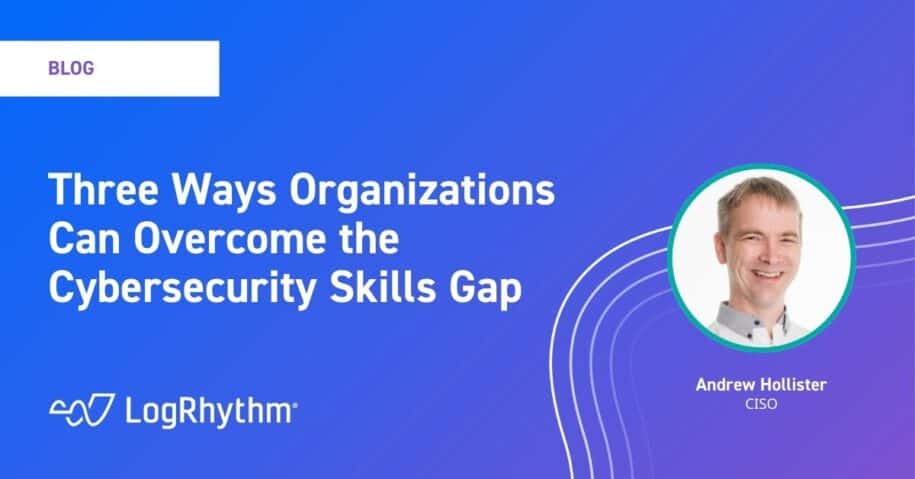Organizations face a significant obstacle: the cybersecurity skills gap. In fact, according to a recent Cybersecurity Ventures report, there are 3.5 million cybersecurity jobs available worldwide.
The talent shortage has become a critical impediment for organizations as they lack the necessary head count to operate a security operations center (SOC). Without skilled professionals to manage and oversee security operations, businesses are left exposed to potential threats.
This disparity between the demand for skilled cybersecurity professionals and the available talent pool is driving organizations to explore alternative avenues, which I will explore in this article.
Three Ways to Overcome Cybersecurity Skill Gap Challenges
Diving in, these solutions include looking into full or partial outsourcing of cybersecurity services as well as establishing better partnerships with vendors, leveraging advances in technology, and investing in training.
1. Embrace Vendor Partnerships
To overcome the talent shortage, finding vendors that align closely with an organization’s goals and exhibit a commitment beyond mere transactional engagements becomes of paramount importance. Forging partnerships with vendors that do not merely offer technology solutions but proactively immerse themselves in solving challenges can prove to be a transformative approach.
The key is to find vendors who provide technology solutions but also truly become an extension of the team—vendors who “wear the customer’s jersey” and sit on their side of the table to collaboratively address issues.
In this dynamic landscape, it is imperative to seek vendors who embrace a consultative role, going beyond selling solutions and focusing on understanding the organization’s unique needs. A successful vendor relationship should surpass sales targets and renewal cycles; it should prioritize adding substantial value to the cybersecurity strategy.
Vendors, for example, who commit themselves to being true catalysts for change within the industry, who are open to challenging norms and who actively participate as partners in the journey toward robust cybersecurity, are the ones to be pursued.
2. The Rise of Automation and Machine Learning
Another innovative solution that has emerged from the skills gap is a greater reliance on automation and machine learning (ML) in cybersecurity operations, as these technologies can automate routine tasks and enhance the capabilities of their existing staff.
ML, in particular, holds great promise in addressing the challenges associated with analyzing extensive data volumes, identifying anomalies and responding to threats. By leveraging ML, organizations have the potential to significantly enhance their threat detection and incident response capabilities, enabling them to stay ahead of emerging threats.
Automation also plays a significant role in cybersecurity by alleviating the burden on cybersecurity teams through a reduction in reliance on human resources for repetitive and mundane tasks. This, in turn, enables security professionals to dedicate their time and expertise to tackling more intricate and complex security challenges that require human judgment and critical thinking.
Moreover, the prevalence of automation in the cybersecurity landscape is increasing, with 57% of organizations already having adopted automation and an additional 26% planning to adopt it in the future.
3. Invest in Training and Development
Organizations should also consider investing in training and development within the cybersecurity domain. Some may hesitate, fearing that trained employees will leave and take their newly acquired expertise with them. However, there is a counterpoint to consider: If organizations fail to invest in training, employees may stay but lack the necessary skills to effectively perform their job and defend against cyberthreats.
By prioritizing training and development, organizations can address the skills shortage. The threat landscape is constantly evolving. Staying updated with the latest knowledge and techniques is essential for effective defense against cyberthreats. Moreover, by offering training opportunities, organizations can attract top talent and retain skilled professionals, creating a positive cycle of growth within the organization.
Promoting internal hiring and cross-functional collaboration is another valuable strategy. Bringing in individuals with diverse backgrounds and skill sets, even from outside traditional security roles, can act as a force multiplier. These professionals can offer fresh perspectives and innovative approaches to security problem-solving, enriching the capabilities of the security team.
Conclusion
The scarcity of skilled cybersecurity professionals cannot be resolved overnight, and the industry must acknowledge this reality. While organizations can invest in training and development programs to upskill their existing employees, it is important to recognize that developing cybersecurity talent takes time and effort.
Nevertheless, by embracing innovative solutions and fostering collaborative efforts, organizations can successfully navigate the cybersecurity skills gap and ensure the protection of their critical data and systems in an increasingly interconnected world.
For more tips on how to build a strong and effective cybersecurity team, read this SOC Hiring Handbook.

